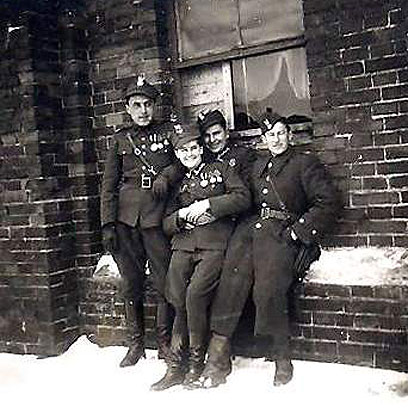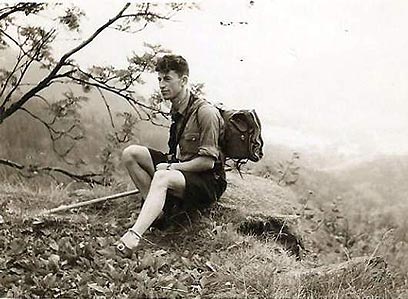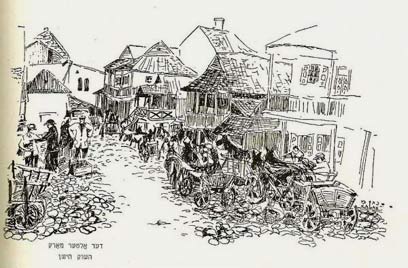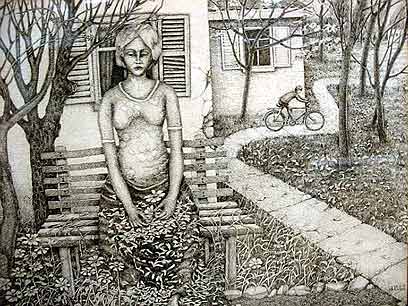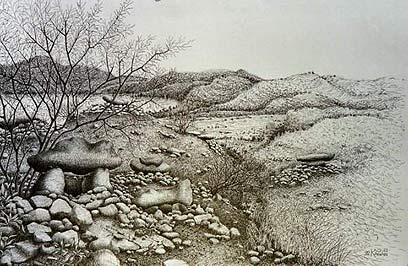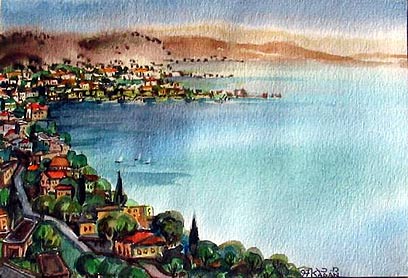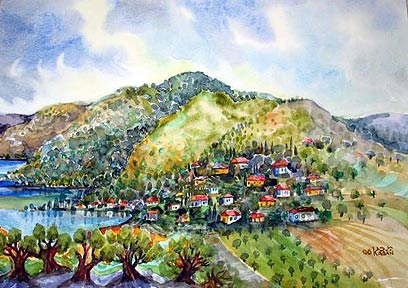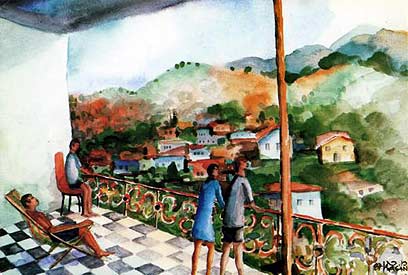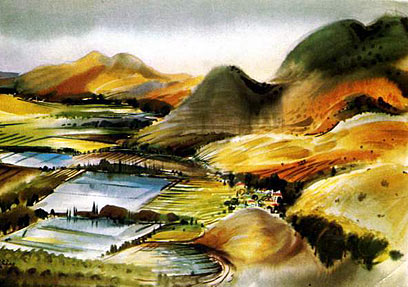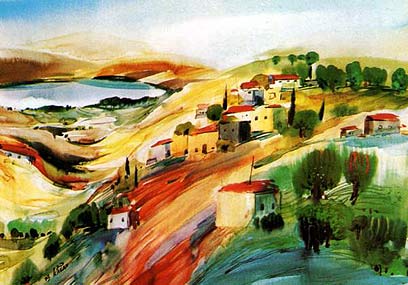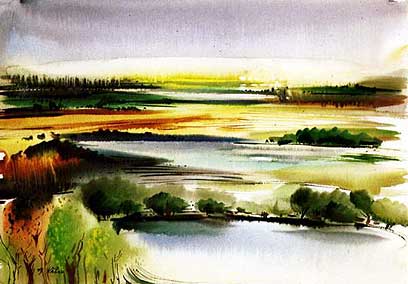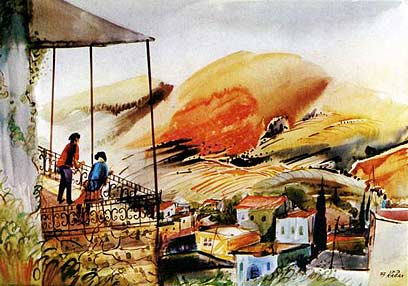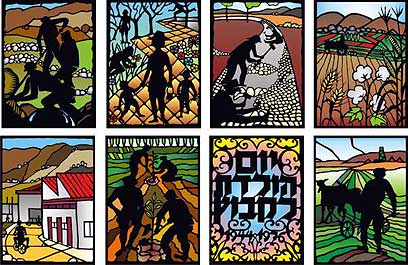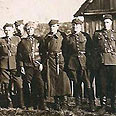
Shana Tova greetings from the past
Artist Moshe Cagan was born in Poland in 1922, survived the Holocaust and made aliyah in 1948. In Israel he painted the homeland's landscapes with water, acrylic colors. Over the years, they became Jewish New Year greetings and were displayed in Israel and worldwide. Here's a peek into the Land of Israel through a paintbrush
"I've been painting ever since I can remember. The reason: I was born in a charming city, which has fortresses in its landscape and a town in the bottom of a narrow valley. I lived next to a mountain covered with forests, where I used to run for a few minutes to reach the end of the forest where a fortress was located.
"Upon the breakout of World War II, and following the Molotov–Ribbentrop Pact, the city was annexed to the Soviet Union and a Soviet oppression regime began.
'In 1940 I traveled to the oil city of Baku, next to the Caspian Sea, where I worked as a dental technician – a profession I acquired during my studies. There I also painted, including leaders of the Soviet Union, which enabled me to make enough money to send to my parents.
"When the Nazi offensive on the Soviet Union began in 1941, my situation worsened as I was an "unsafe element", and I was exiled to a port city called Krasnovodsk in Turkmenistan. From there I tried to escape with soldiers of the Polish Andres Army to Iran, but to no avail.
"In 1941 my city was conquered by Germany, and the Jews were put in a ghetto. In 1944 the Soviet Union liberated my city from the Nazi horror.
"When the democratic polish army was assembled in 1943, I joined its ranks as a scout and fought with it until we took Berlin. It was then that I learned my family had perished in the Holocaust.
"In 1946 I was released from the army and joined the ranks of Hashomer Hatzair movement and its reestablishment. I immigrated to Israel in 1948 and joined Kibbutz Shamir, where I live with my family to this very day."
Moshe loves to paint with water, drawing and acrylic colors. The Galilee landscape appears often in his paintings, so some of them were used for Jewish New Year greetings. The different High Holidays at the kibbutz were decorated with Moshe's paintings. Exhibitions of his paintings were displayed in Israel and worldwide.
I would like to thank Nava, Moshe's daughter, for sending me a selection of his paintings and telling me about them.
Shana Tova.
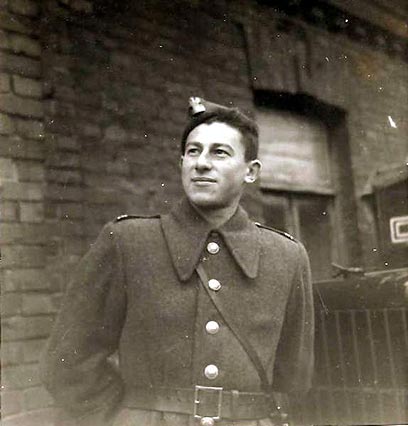
1. Warsaw, 1945. Moshe in uniform
